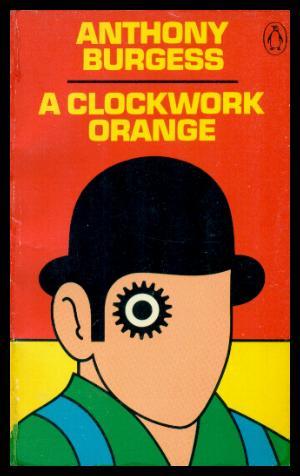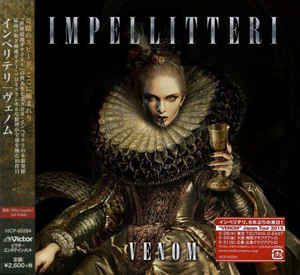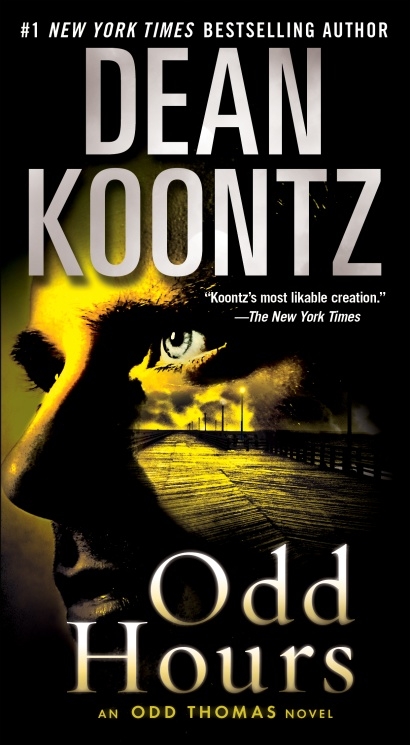 A teenage delinquent is arrested for murder. To avoid a lengthy prison sentence, he submits himself to an experimental medical cure that quashes all of his violent impulses, along with his ability to enjoy classical music: the thing that gave his life fulfillment and meaning. He emerges from prison a changed man, but also a broken one. Should the state be allowed to do this?
A teenage delinquent is arrested for murder. To avoid a lengthy prison sentence, he submits himself to an experimental medical cure that quashes all of his violent impulses, along with his ability to enjoy classical music: the thing that gave his life fulfillment and meaning. He emerges from prison a changed man, but also a broken one. Should the state be allowed to do this?
Burgess seems to disagree. But he also stacks the deck against the state by not asking an important question: “if not the Ludovico Technique, what should happen to Alex?”
What’s the alternative? Life in prison? The electric chair? Should he be allowed to resume his crime spree? Roger Ebert once said that it’s difficult to cheer for the hero when the villain is the one making sense, and a similar problem occurs here: we’re told . Jumping out of a plane at 10,000 feet only seems like a bad idea until you notice the smoke spiraling from the engines, and Burgess cheats by not considering the even worse alternatives. Much is made of Alex’s lost ability to enjoy classical music (a metaphor for his humanity), but the woman he murdered is now incapable of enjoying music of any genre or style.
A Clockwork Orange‘s theme is stated within the book itself: Alex is like an orange, once bursting with juice and sweetness, changed by the state into a piece of machinery. The natural, turned into the unnatural. But to what extent was Alex’s behavior ever natural? At the start, he and his gang drink “milk-plus” to fortify themselves for a night of carnage. The inference is that this is stimulant-laced milk. Alex chose to put a mind-altering substance into his body…just like he chose the Ludovico Technique. Why is the first an act of free choice, but the second isn’t? Beyond that, it opens the question as to whether “natural” is even a defensible word, or “free will” a tenable concept.
Oranges are a poor choice of metaphor, because they are clockwork to begin with. No wild oranges exist, and they were presumably bred from some other citrus fruit. That fruit was probably bad tasting, and perhaps inedible or toxic. Through a combination of genetic mutations, planned breeding programs, and hybridization, we have the modern orange. Many kinds, in fact! You can get a Valencia orange, which is sweet with a lot of juice. Or a blood orange, a tarter fruit with an attractive red color. None of this is natural. The orange was guided towards its present forms by mankind’s hand.
In the same way, Alex didn’t sprout from the forehead of Zeus – he was created and shaped by factors beyond his control. Alex’s “free will” is actually the genes of his mother and his father, the prenatal environment in his mother’s womb, and the society he was raised in. Some think that the increase in crime in the latter 20th century was fuelled (literally) by the presence of leaded gasoline in the soil. After gasoline became unleaded, crime rates dropped. Imagine if Alex’s sociopathy came from lead – a mistake by the government. The Ludovico Technique is an attempt to correct that mistake. Why confuse the mistake as Alex’s free will, and the correction as abhuman meddling?
As a novel, the book is very good. I wish it had only tried to be a novel. It moves quickly, except for the prison scenes in the middle part. The depravity is as nasty as it is exciting, and Burgess’s dystopian England is fleshed out just enough to seem realistic, leaving the attention on Alex (as he surely would have wanted.)
Most of Burgess’s other work are comic novels, and there’s lots of humor here: after Alex finally suffers some consequences for his actions, he writes “this is the real weepy and like tragic part of the story beginning.” That was a Good laugh. (Unfortunately, the book also contains a Bad Laugh: at the start, Alex is beating up a stewbum who suddenly launches into a melodramatic speech worthy of Hiawatha.) Burgess’s most brilliant concept here is nadsat, an argot based on Russian, schoolboy talk, and Cockney rhyming slang. It adds an alien, disaffected quality to Alex’s mind, as though we’re seeing the world through a Babelfish translation. It also might have been a tactical move on Burgess’s part. Harder to get outraged over in-out-in-out performed on a devotchka then rape performed on a woman.
Even so, the US version of the book didn’t escape a critical (and notorious) edit, the omission of the final chapter. Alex, having broken through the Ludovico Technique, nonetheless decides that ultra-violence isn’t for him. In other words, he grows up. This chapter was cut over Burgess’s objections by his US publisher, probably for marketing reasons. Readers are used to the storytelling convention of “fall, then rise, then fall”, or “rise, then fall, then rise”. The uncut version of A Clockwork Orange is more like “fall, then rise, then fall, then rise”. For decades, only the 20 chapter version was available in the US. In 1986, the full 21 chapter book was published for the first time.
The extra chapter completely transforms A Clockwork Orange, and I don’t know which version I prefer. The 21 chapter version is didactic, and feels like Burgess tying too neat a bow on the story. “Well, Alex grows up anyway, so that proves it was all for nothing.” At 20 chapters, A Clockwork Orange falls more into line with the film. And I strongly dislike the film.
Say what you will about Burgess, but he never tries to make Alex your pal. Never, ever, ever. He’s an evil kid, and you are supposed to dislike him. Stanley Kubrick almost seems to hero-worship Alex, even modifying his crimes so that they’re less awful (instead of raping a pair of ten year old girls, Film-Alex has consensual sex with two adult women). You can go over the film scene by scene, and note the shots Kubrick takes of Malcolm McDowell, making him look dashing, romantic, even darkly Messianic. You can also note the way he portrays Alex’s victims as bug-eyed goons and creeps. Burgess’s book seems to say “Alex is evil, but was it right for the state to alter his brain?” Kubrick’s film seems to say “hey, don’t harsh Alex’s flow, man.”
Films have an annoying habit of colonising the books they’re based on. Now it’s hard to read A Clockwork Orange and not see Kubrick’s milk-plus bar, or Kubrick’s Durango ’95 speeding down the highway. The Ludovico Technique is now the Kudobricko Technique. The film amplified the very parts of the story that Burgess had tried so hard to tamp down, and this may have been why he later disowned it. Once, he could have claimed ownership of A Clockwork Orange. But now, in the minds of millions, Burgess’s most famous work is…someone else’s!
On its own, the book is a great story. Very dark. Too bad Burgess also wanted it to be a gedankenexperiment, because it doesn’t have much gedank.


